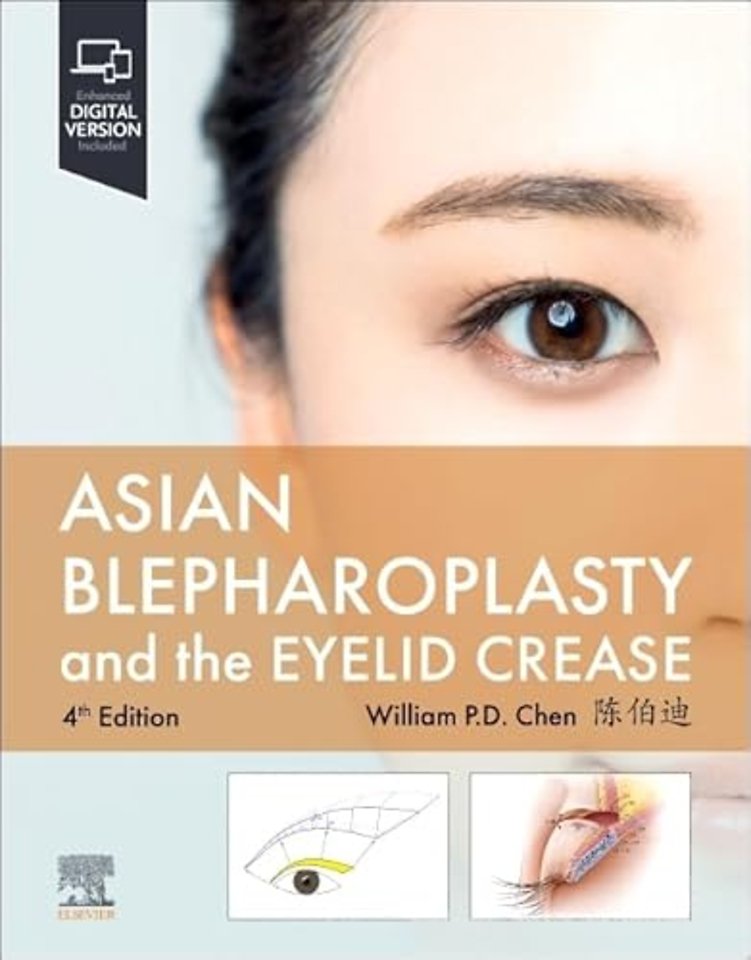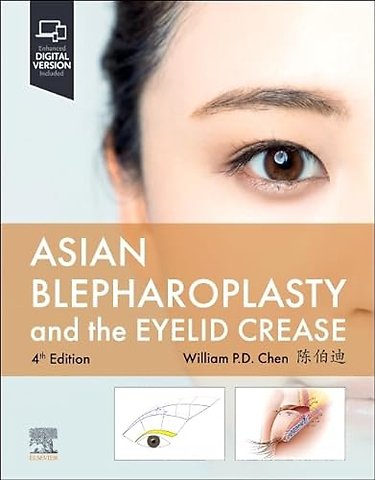Asian Blepharoplasty and the Eyelid Crease
Samenvatting
Regarded as the “go-to” reference on this complex and intricate procedure, Dr. William P.D. Chen’s Asian Blepharoplasty and the Eyelid Crease, 4th Edition, has been thoroughly revised to include the most up-to-date and authoritative information you need to expand your practice or refine your skills. Ideal for plastic surgeons, ophthalmologists, and cosmetic dermatologic surgeons, this unique multimedia resource offers comprehensive coverage of eyelid anatomy, surgical approaches, and revision surgery—all highlighted by more than 450 step-by-step illustrations and a comprehensive video program that provide operative guidance and illustrate patient outcomes over time.Revised throughout with updated case examples, select new patient photos, and updated coverage based on the recent literatureEight new chapters, including Visual, Physiological and Aesthetic Factors Affecting Outcome in Asian Blepharoplasty; Techniques, Principles, and Benchmarks in Asian Blepharoplasty; Depth of Upper Lid Crease Construction in Asian Blepharoplasty; Ratios and Proportions in Double-Eyelid Segments; The Eyelid Crease Height, Depth, and Shape: A Scoring System for Revisional Asian Blepharoplasty; Failure Analysis in Asian Blepharoplasty; An Intraoperative Primer: Paths, Pitfalls, and Solutions in Asian Blepharoplasty (Incisional Methods), and A Deeper Interpretation of the Asian Blepharoplasty Technique of Trapezoidal Debulking and Clearance of Preaponeurotic SpaceContains a new paradigm of scoring suboptimal findings based on eyelid crease height, depth, and crease shape, providing realistic assessment and comparisonStep-by-step instructions for optimizing the biodynamics for eyelid crease formation; how to eliminate the prominent medial upper lid fold; removing tissues as a trapezoidal block using minimized steps; and much moreExpanded guidance on managing complications integrated throughout, with surgical pearls and summative boxes where relevantHigh-quality, full-color artwork shows three-dimensional representations of key anatomy and procedural stepsExtensive collection of case studies, with before and after patient photos; plus practice worksheets, appendix tables, comprehensive references, and pearls and pitfalls throughoutFeatures a comprehensive video program including 18 primary surgery cases, 12 revisional surgery cases, 10 “short step” videos, 6 concept videos, and 22 edited compilations of video clips depicting how to approach each procedural step across a range of patient casesAn eBook version is included with purchase. The eBook allows you to access all of the text, figures and references, with the ability to search, customize your content, make notes and highlights, and have content read aloud

